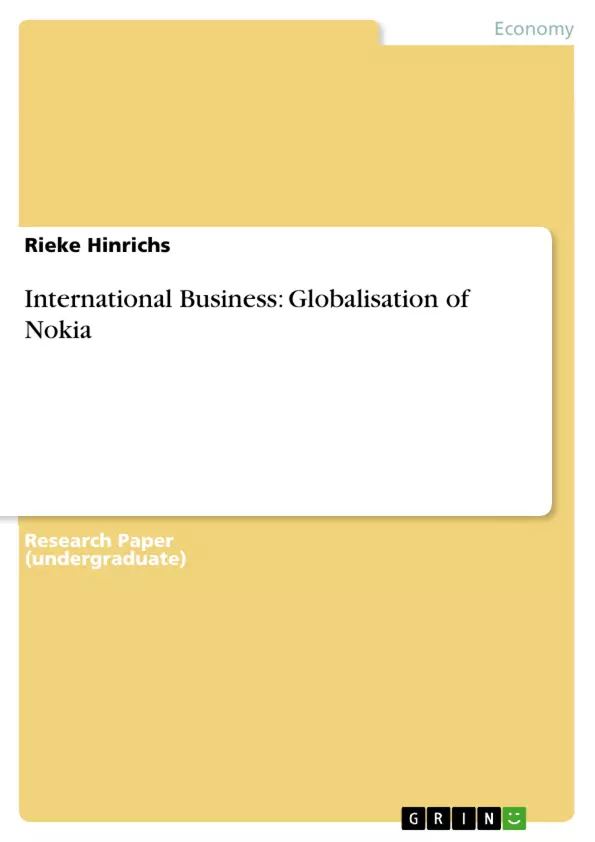In this assignment the nature and trends of globalisation will be identified and
analysed, which will include the investigation of patterns, drivers and
methods of internationalisation. After explaining theoretical principles and
theories, those will be applied Nokia in order to identify how the company is
doing business internationally. [...]
Inhaltsverzeichnis (Table of Contents)
- 1. INTRODUCTION.
- 2. NOKIA'S ENGAGEMENT IN GLOBAL TRADE
- 2.1 NOKIA'S INTERNATIONAL BACKGROUND.
- 2.2 THE PATTERN OF INTERNATIONALISATION
- 2.3 EXTENT OF GLOBALISATION - IS NOKIA A TRULY GLOBAL BUSINESS?
- 2.4 NOKIA'S INTERNATIONAL BUSINESS Strategies - TheoRIES OF INTERNATIONAL TRADE.
- 2.4.1 International Product Life Cycle
- 2.4.2 The Stages of International Business Expansion
- 2.5 TRADE DISPUTES/BARRIERS WITH CHINA
- 2.6 GLOBAL SHIFT TO PROTECTIONISM
- 3. CONCLUSION
Zielsetzung und Themenschwerpunkte (Objectives and Key Themes)
This assignment aims to explore the nature and trends of globalization, including the investigation of patterns, drivers, and methods of internationalization. Theoretical principles are applied to Nokia to analyze the company's international business practices. Key themes covered include:- The role of internationalization in globalization
- Nokia's international background and expansion strategies
- The extent to which Nokia operates as a truly global business
- Trade disputes and barriers, particularly with China
- The global shift to protectionism
Zusammenfassung der Kapitel (Chapter Summaries)
- Chapter 1: Introduction - This chapter introduces the concept of international business and globalization, defining key terms and highlighting their increasing importance for organizations. The chapter also introduces the focus of the assignment, which is to analyze Nokia's international business activities.
- Chapter 2: Nokia's Engagement in Global Trade - This chapter delves into Nokia's international background, including its pattern of internationalization and its strategy for engaging in global markets. The chapter analyzes the extent to which Nokia can be considered a truly global business and examines the theories of international trade that underpin Nokia's international business strategies. The chapter also explores trade disputes and barriers, focusing on Nokia's relationship with China. Finally, the chapter examines the global shift to protectionism and its impact on global trade.
Schlüsselwörter (Keywords)
This assignment explores globalization, internationalization, international business, international trade, foreign direct investment, Nokia, emerging markets, China, protectionism, trade disputes, and trade barriers.
Excerpt out of 32 pages
- scroll top
- Quote paper
- Rieke Hinrichs (Author), 2013, International Business: Globalisation of Nokia, Munich, GRIN Verlag, https://www.grin.com/document/214796
Look inside the ebook



